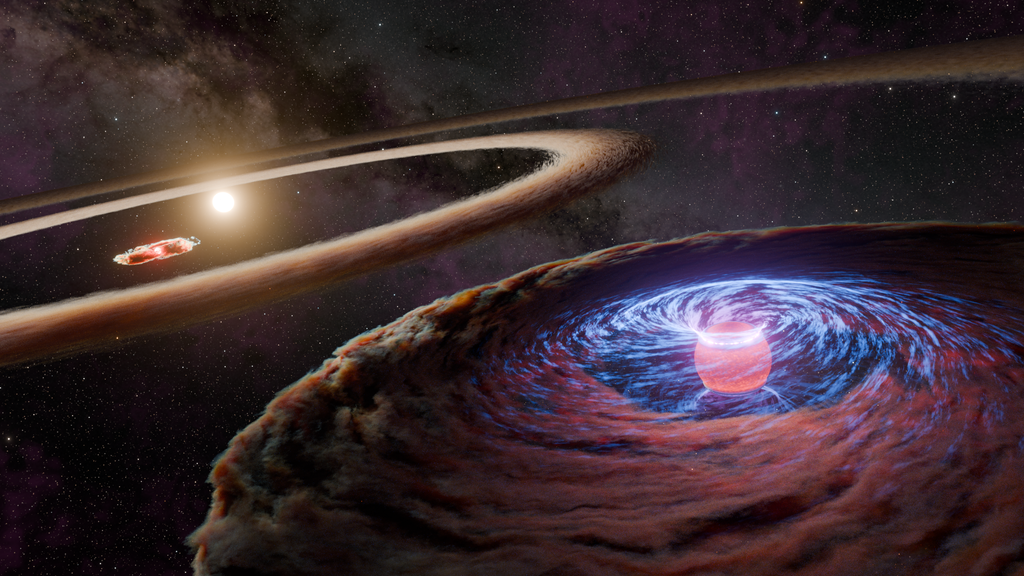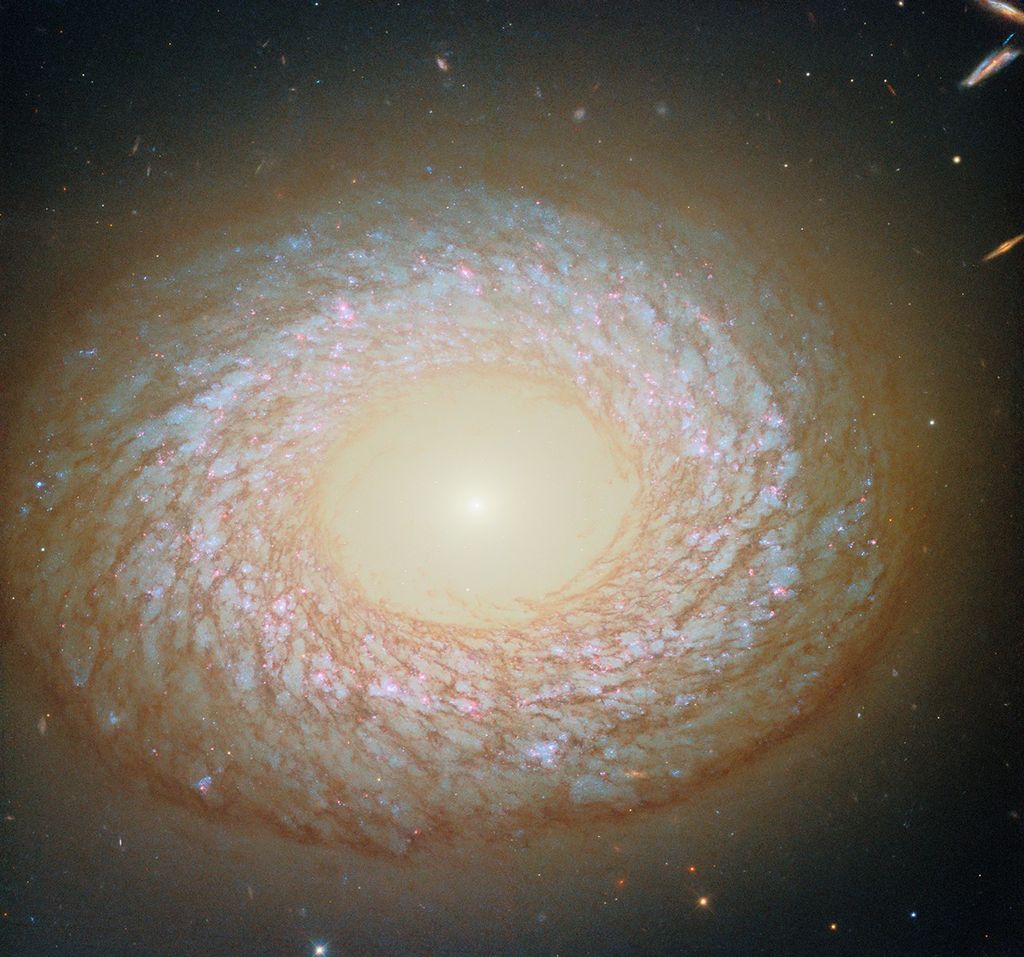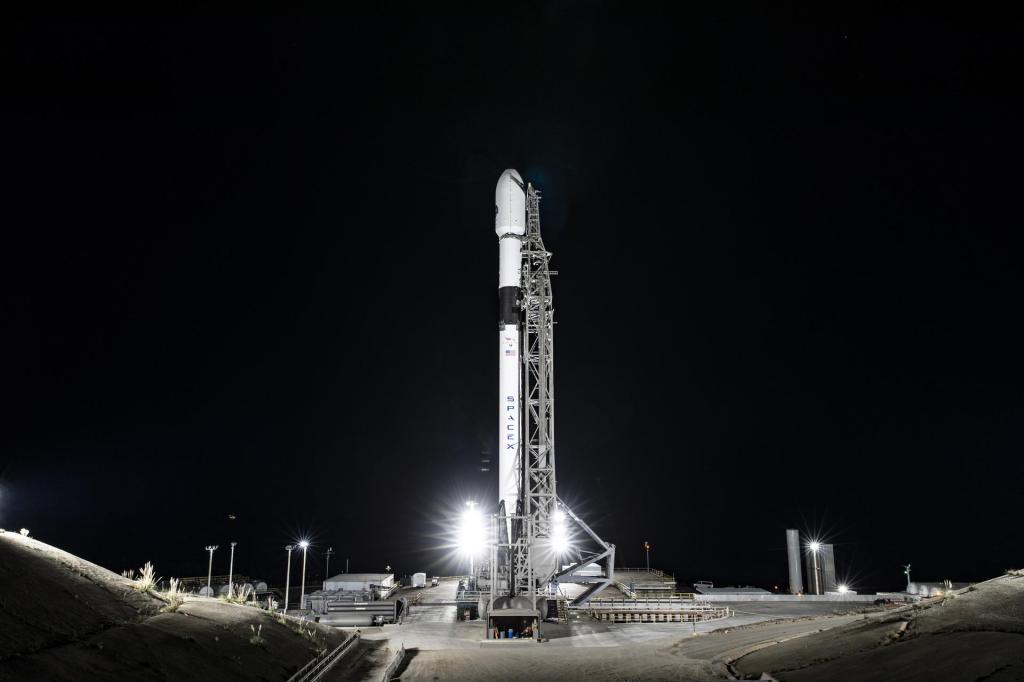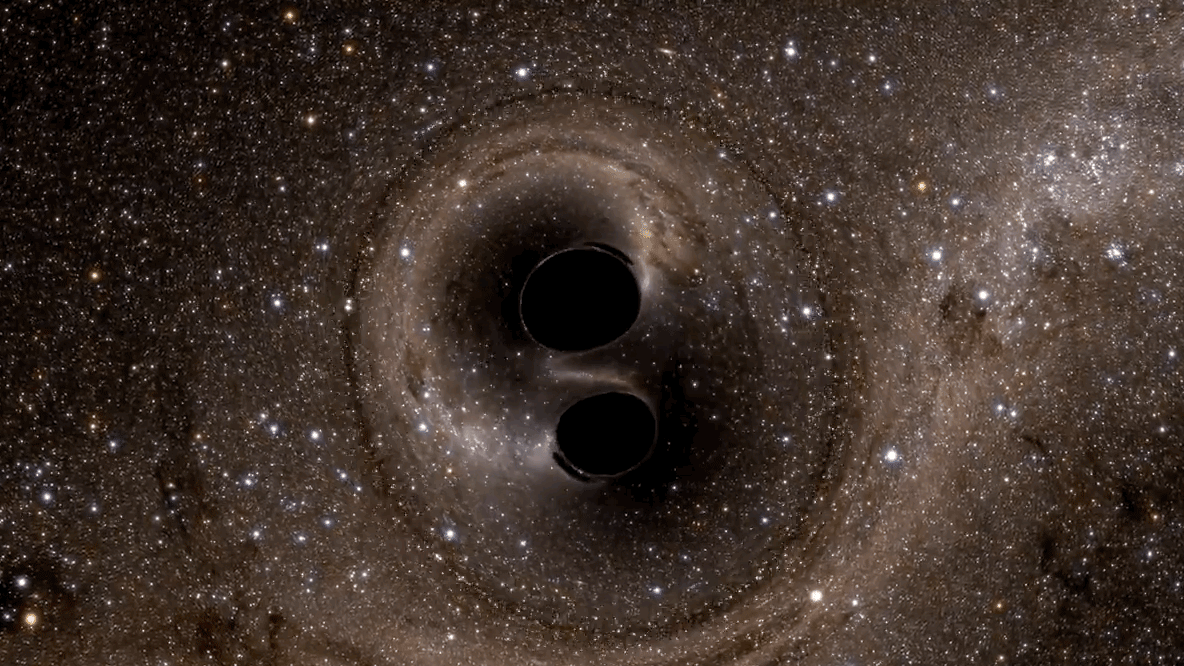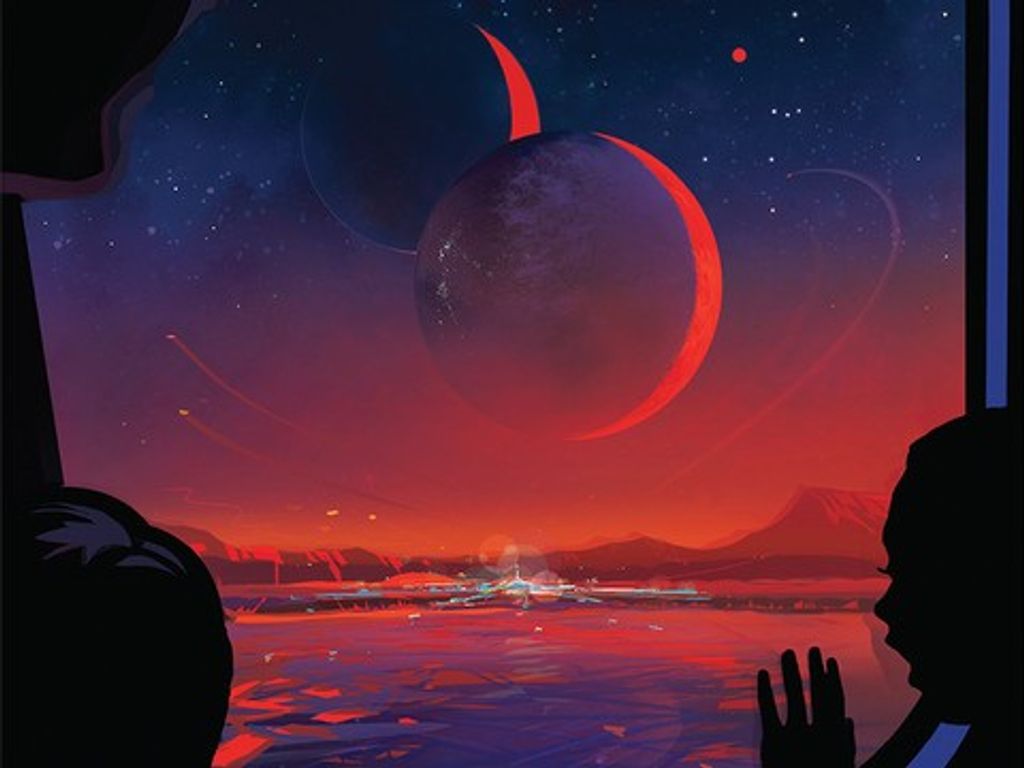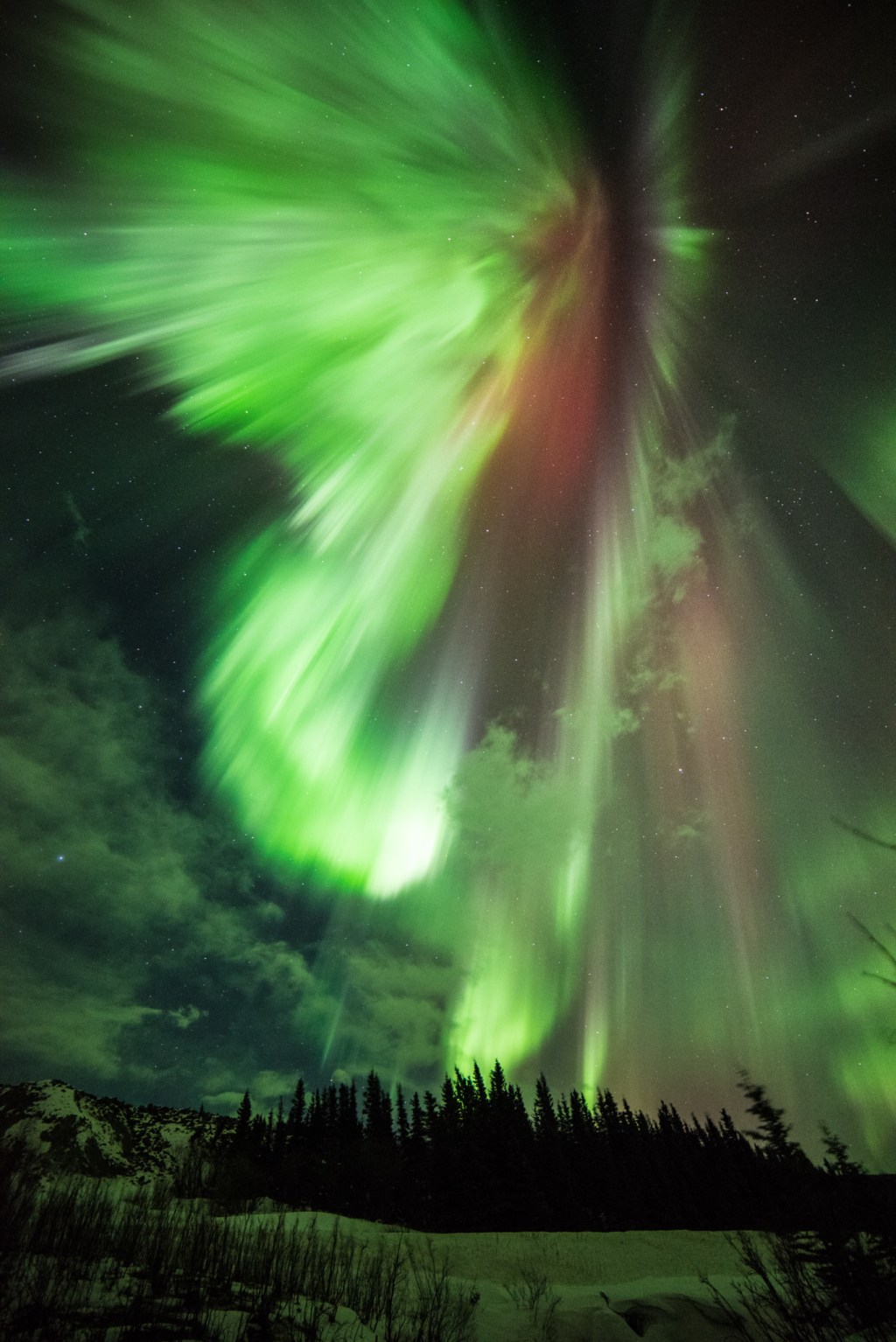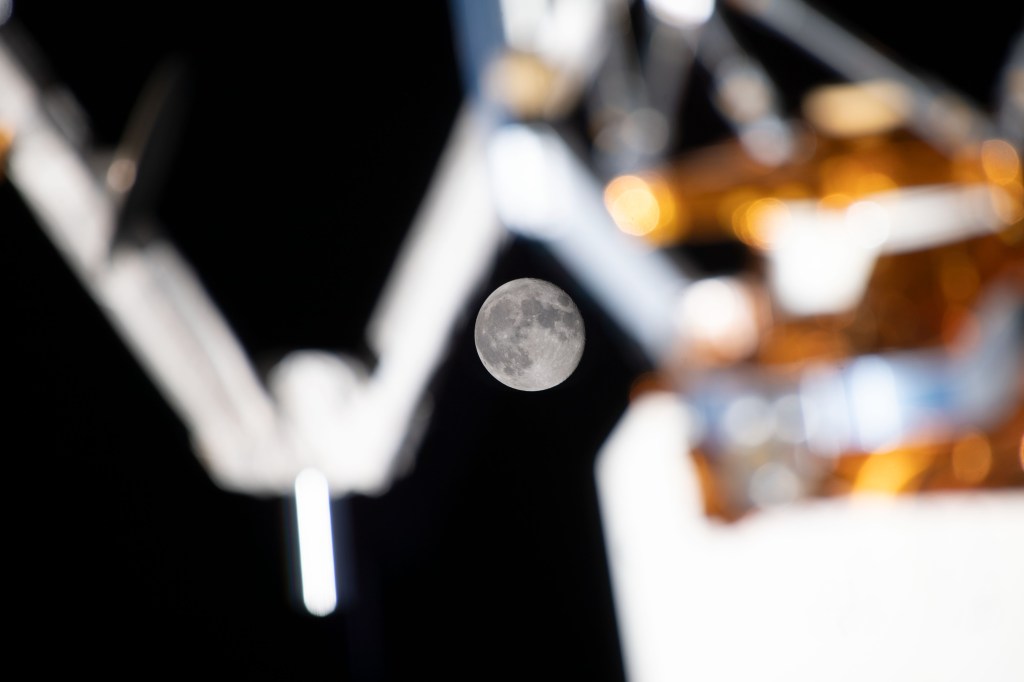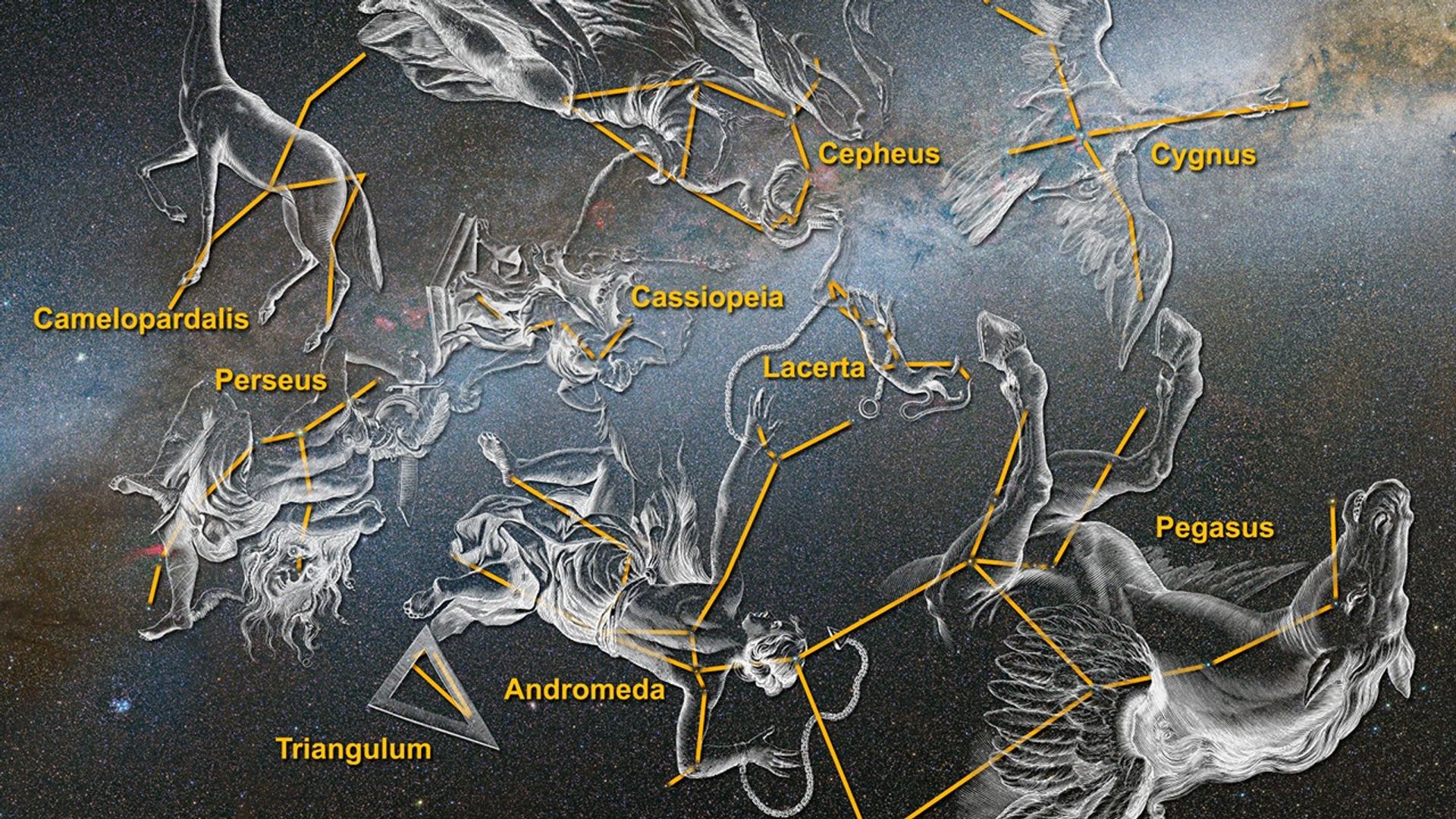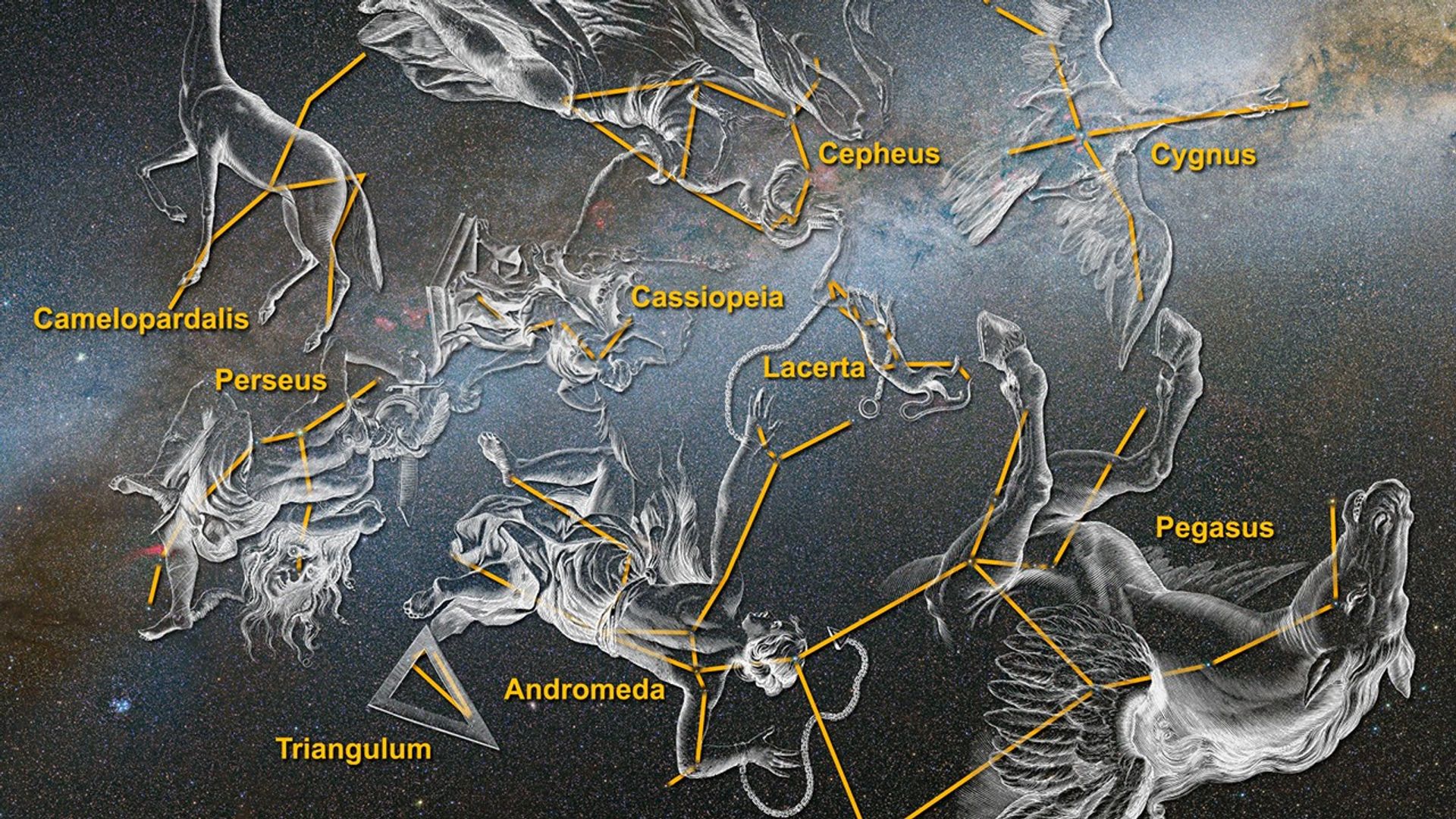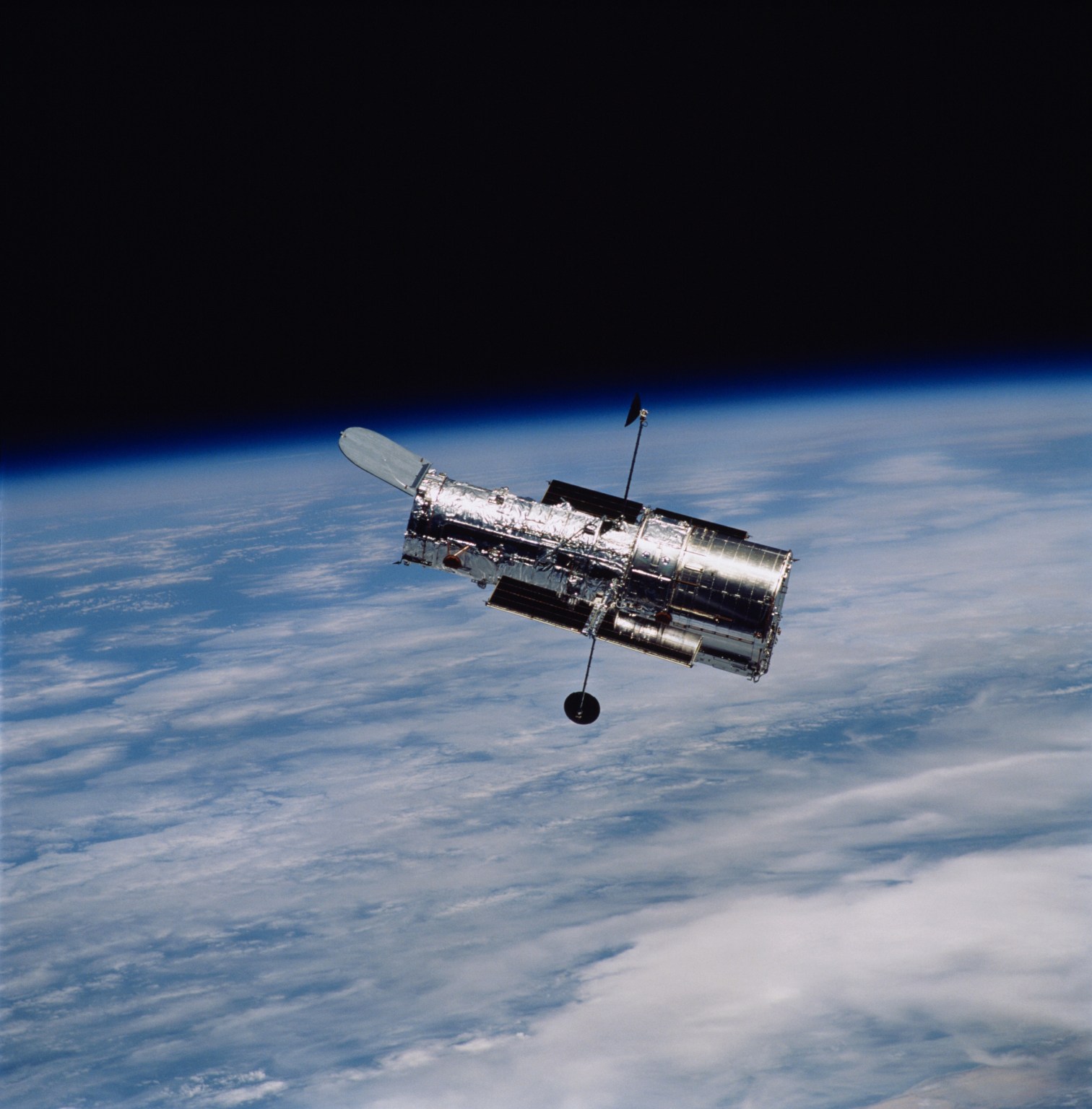1 min read
Compass and Scale Image of PHAT Mosaic
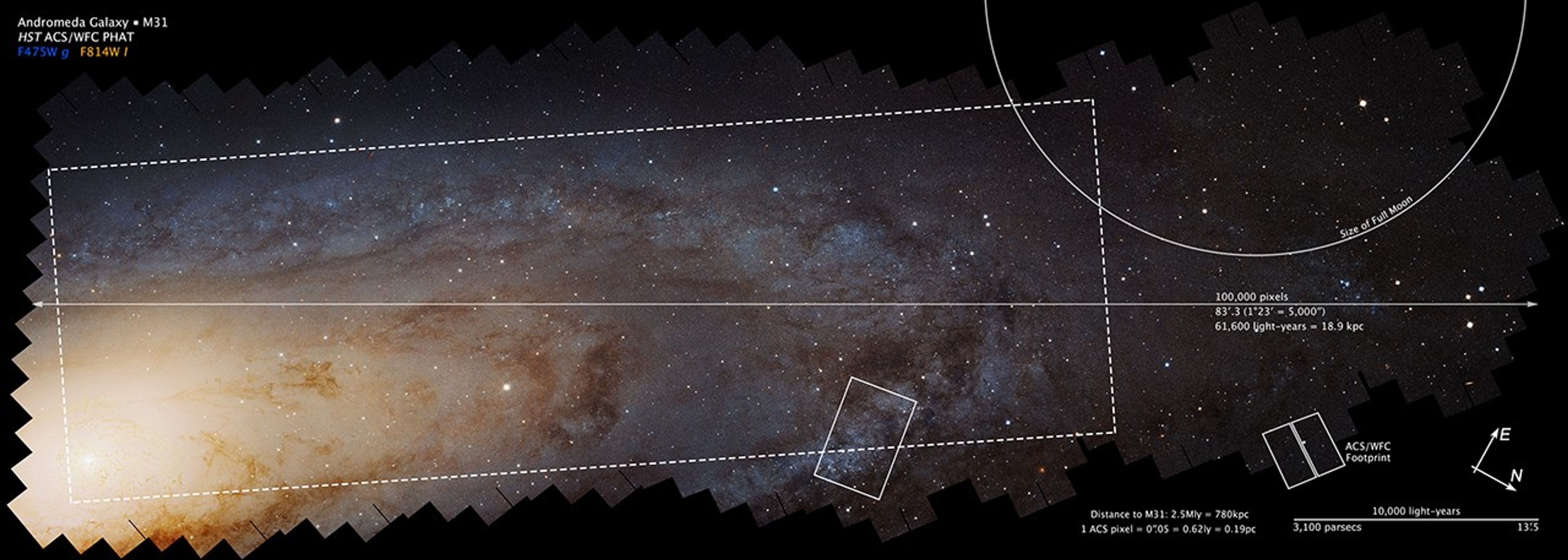
About the Object
- R.A. PositionR.A. PositionRight ascension – analogous to longitude – is one component of an object's position.00h 42m
- Dec. PositionDec. PositionDeclination – analogous to latitude – is one component of an object's position.+41° 15'
- ConstellationConstellationOne of 88 recognized regions of the celestial sphere in which the object appears.Andromeda
- DistanceDistanceThe physical distance from Earth to the astronomical object. Distances within our solar system are usually measured in Astronomical Units (AU). Distances between stars are usually measured in light-years. Interstellar distances can also be measured in parsecs.2.5 million light-years (0.8 megaparsecs)
About the Data
- Data DescriptionData DescriptionProposal: A description of the observations, their scientific justification, and the links to the data available in the science archive.
Science Team: The astronomers who planned the observations and analyzed the data. "PI" refers to the Principal Investigator. - InstrumentInstrumentThe science instrument used to produce the data.HST>ACS
- Exposure DatesExposure DatesThe date(s) that the telescope made its observations and the total exposure time.July 2010 - October 2013, Total Exposure Time: 394 hours (16.1 days)
- FiltersFiltersThe camera filters that were used in the science observations.F475W (g) and F814W (I)
- Object NameObject NameA name or catalog number that astronomers use to identify an astronomical object.M31, Andromeda Galaxy, NGC 224
- Object DescriptionObject DescriptionThe type of astronomical object.Spiral Galaxy
- Release DateJanuary 5, 2015
- Science ReleaseHubble’s High-Definition Panoramic View of the Andromeda Galaxy
- Credit

This image is a composite of separate exposures acquired by the ACS instrument on the Hubble Space Telescope. Several filters were used to sample broad wavelength ranges. The color results from assigning different hues (colors) to each monochromatic (grayscale) image associated with an individual filter. In this case, the assigned colors are: Blue: F475W (g) Yellow: F814W (I)

Related Images & Videos

Hubble M31 PHAT Mosaic
The largest NASA Hubble Space Telescope image ever assembled, this sweeping bird's-eye view of a portion of the Andromeda galaxy (M31) is the sharpest large composite image ever taken of our galactic next-door neighbor. Though the galaxy is over 2 million light-years away, the...

Hubble M31 PHAT Mosaic (Uncropped)
The largest NASA Hubble Space Telescope image ever assembled, this sweeping bird's-eye view of a portion of the Andromeda galaxy (M31) is the sharpest large composite image ever taken of our galactic next-door neighbor. Though the galaxy is over 2 million light-years away, the...
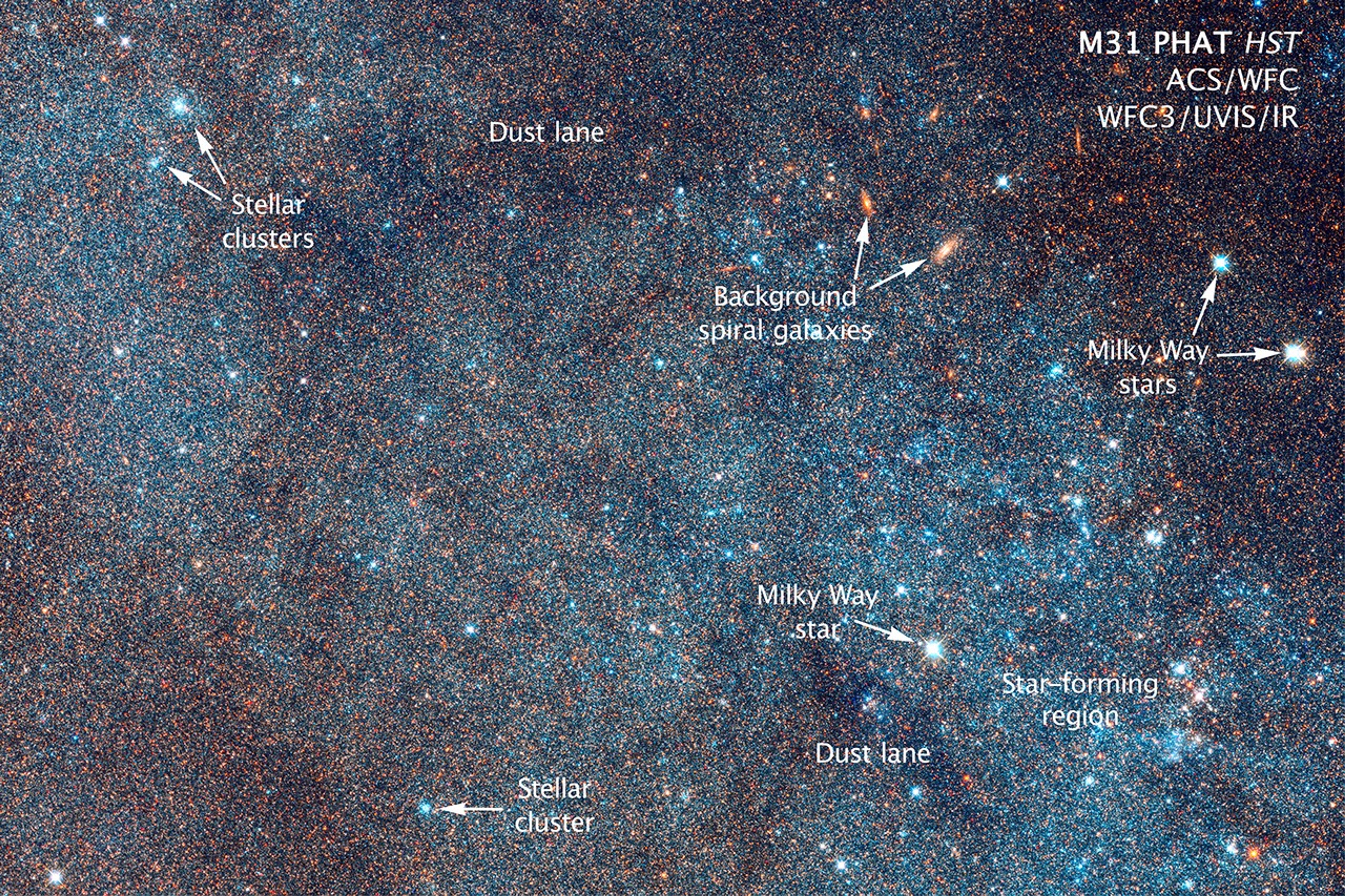
Annotated Close-up of Andromeda
In this detailed image of the Hubble Space Telescope M31 PHAT mosaic image, several object types are labeled, including dust lanes, stellar clusters, Milky Way stars, and star-forming regions. This image is a small section of the full mosaic that includes near-ultraviolet,...
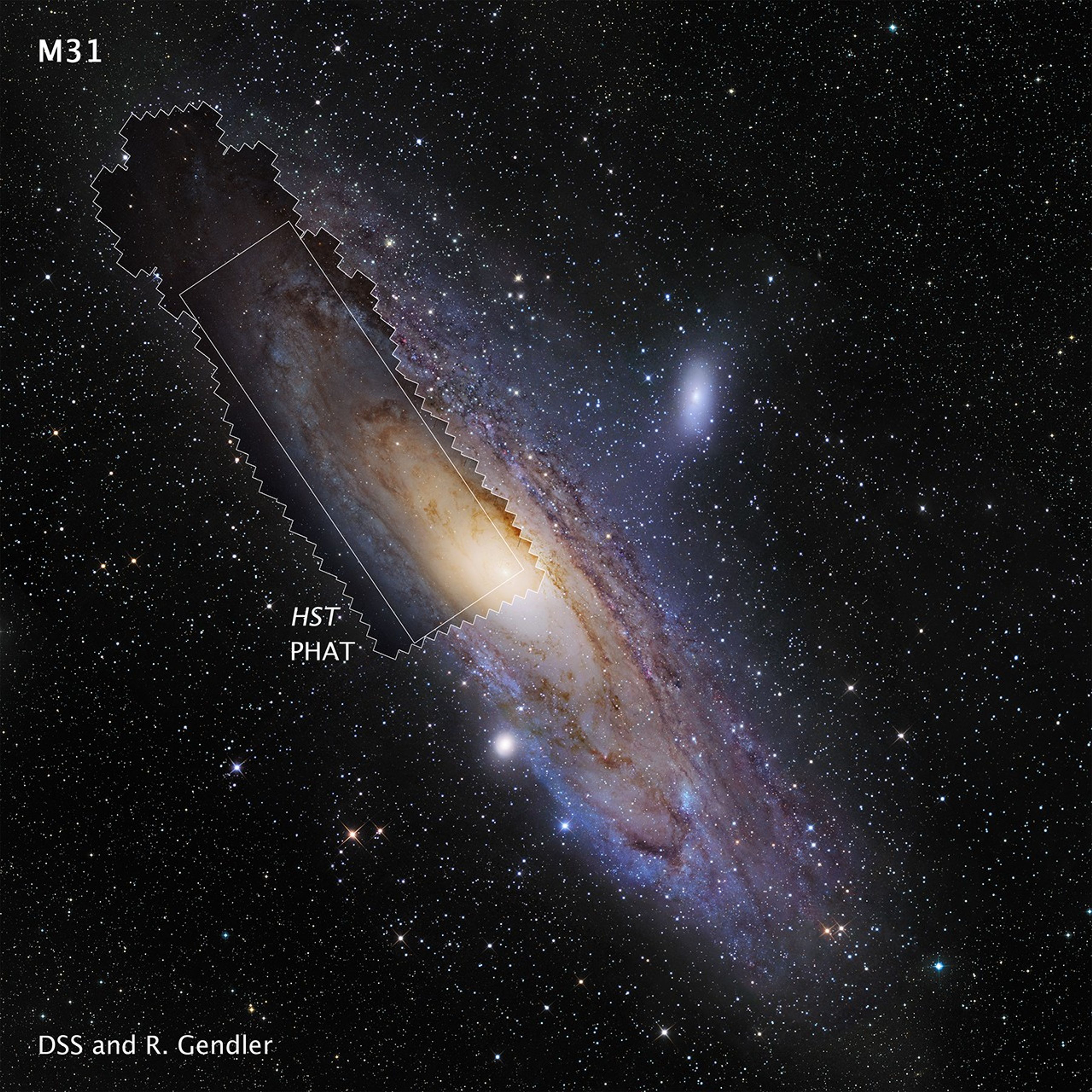
Hubble M31 PHAT Mosaic in Ground-based Image of M31
The Hubble Space Telescope M31 PHAT mosaic image is shown in context with a ground-based image of galaxy M31. The background image, taken by Robert Gendler, was made by compositing M31 data from a 12.5-inch Ritchey-Chretien telescope with M31 data from the Digitized Sky Survey.
Share
Details
Claire Andreoli
NASA’s Goddard Space Flight Center
Greenbelt, Maryland
claire.andreoli@nasa.gov

